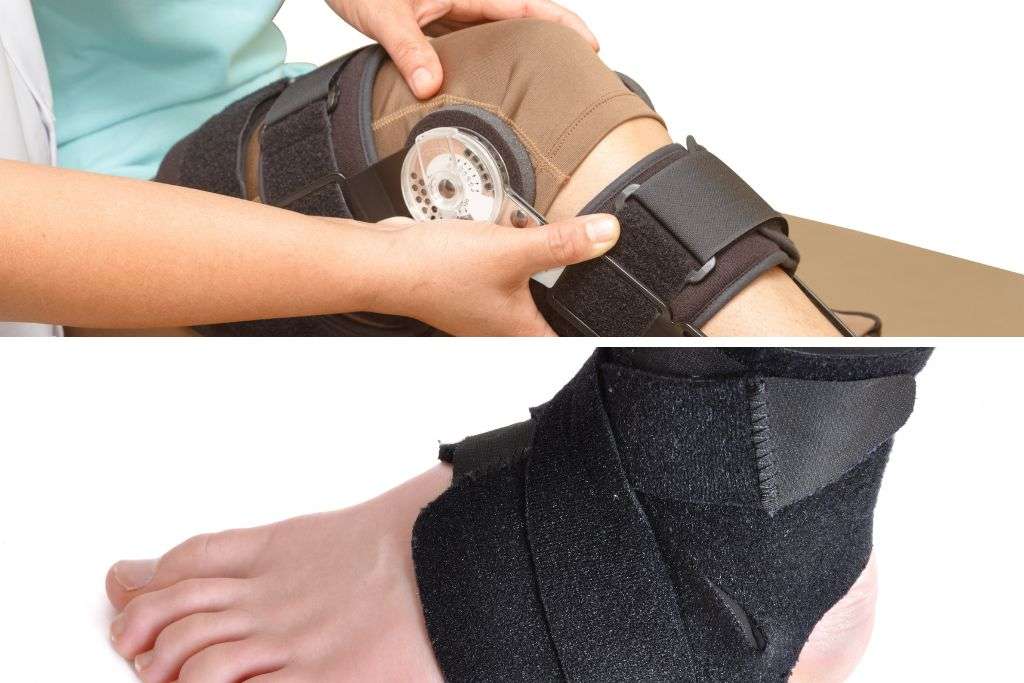
Jun 9,2023
In the world of sports, injuries are an unfortunate reality. Athletes put their bodies through intense physical activities, pushing their limits to achieve peak performance. However, with the risk of injuries, it becomes crucial to prioritize the well-being and safety of athletes. One way to provide support and aid in the recovery process is through the use of sports braces. Specifically, ankle and knee braces play a vital role in preventing and rehabilitating injuries in these areas. Let's delve into the proper use of ankle and knee braces, as well as explore the benefits they offer to athletes.
The ankle is a susceptible joint that often falls victim to sprains and strains during sports activities. Ankle braces are designed to provide stability, support, and protection to the ankle, reducing the risk of injury or aiding in recovery. Here's what you need to know about the best sports braces for ankle support:
Lace-up braces: These braces offer adjustable compression and support, allowing athletes to customize the fit.
Stirrup braces: Providing a rigid structure, stirrup braces immobilize the ankle, offering enhanced stability.
Sleeve braces: These braces are made of elastic materials, providing mild support and compression.
Preventing lateral and medial ankle sprains.
Supporting injured ankles during the recovery process.
Reducing the risk of ankle instability.
Enhancing proprioception (the body's awareness of joint position).
The knee is another area prone to sports injuries, particularly ligament tears and cartilage damage. Knee braces are instrumental in providing stability, reducing pain, and protecting the knee joint. Consider the following when using knee braces for sports injuries:
Prophylactic braces: These braces are designed to prevent injuries by providing general support and stability.
Functional braces: Offering a higher level of support, functional braces are recommended for athletes recovering from knee injuries.
Unloader/offloader braces: Specifically designed for conditions like osteoarthritis, these braces help relieve pressure on the knee joint.
Stabilizing the knee during high-intensity movements.
Providing pain relief for conditions like ligament sprains or arthritis.
Assisting in the rehabilitation process after knee surgery.
Reducing the risk of re-injury during sports activities.
Aside from ankle and knee injuries, athletes also commonly face wrist injuries, such as sprains and fractures. Wrist braces are effective in providing support and stability to the wrist, aiding in recovery and injury prevention. Here's what you should know about wrist braces:
Rigid braces: These braces offer maximum stability and immobilization, typically used during the initial phase of wrist injury recovery.
Soft braces: Made of flexible materials, soft braces provide moderate support while allowing some degree of mobility.
Stabilizing the wrist during impact or repetitive movements.
Reducing the risk of wrist sprains and fractures.
Aiding in the recovery process after wrist injuries.
Providing compression and warmth to alleviate pain and inflammation.
While ankle, knee, and wrist braces are commonly discussed, it's essential not to overlook the importance of shoulder and back braces. These braces play a crucial role in supporting these vulnerable areas, promoting stability, and aiding in injury recovery.
Shoulder braces offer support and compression to the shoulder joint, reducing the risk of dislocations and strains.
They are commonly used by athletes involved in sports that require extensive use of the shoulder, such as baseball, swimming, or weightlifting.
Back braces provide stability and alignment to the spine, reducing strain on the back muscles.
They can be beneficial for athletes dealing with conditions like lower back pain, herniated discs, or spinal instability.
In the realm of sports injuries, the proper use of ankle and knee braces is crucial. These braces provide athletes with the support, stability, and protection needed to prevent injuries and aid in the recovery process. By understanding the different types of sports braces available and their respective benefits, athletes can make informed decisions when it comes to selecting and utilizing the right braces for their specific needs.
Whether it's ankle, knee, wrist, shoulder, or back braces, the goal is to enhance performance, minimize risks, and ensure the well-being of athletes, enabling them to excel in their chosen sports. So, gear up with the appropriate braces and stay in the game injury-free!
Q1: Can I wear an ankle brace for prevention, even if I haven't had any ankle injuries?
A1: Absolutely! Ankle braces can provide additional support and stability, reducing the risk of future injuries.
Q2: How long should I wear a knee brace after an injury?
A2: The duration of knee brace usage depends on the severity of the injury and the recommendations of a healthcare professional. It's best to consult with a medical expert for personalized advice.
Q3: Are wrist braces only for athletes?
A3: Wrist braces can benefit anyone experiencing wrist pain, regardless of whether they are an athlete or not. They offer support and promote healing for various wrist conditions.